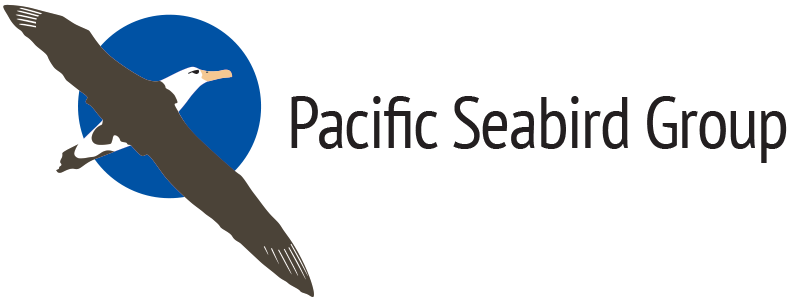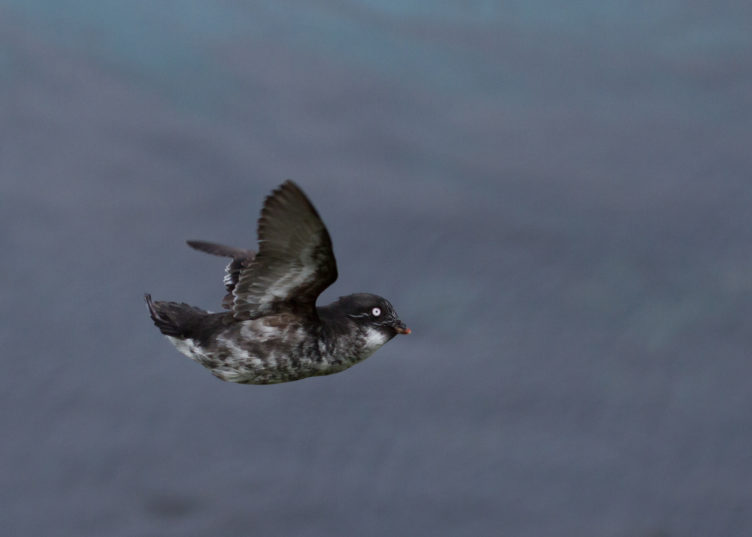Zavalaga et al. (2024)
Author Information
Carlos Zavalaga: Unidad de Investigación de Ecosistemas Marinos, Grupo Aves Marinas, Universidad Científica del Sur, Lima, Peru
Johannes Fischer, Igor Debski, and Graeme Taylor: Department of Conservation Te Papa Atawhai of New Zealand
Mike Bell: Toroa Consulting Limited, New Zealand
Javier Quiñones: Peruvian Marine Research Institute (IMARPE), Peru
Mapping Trans-Pacific Routes of New Zealand Mollymawks: Assessing Risks of Interaction with Fisheries along a Flyway to South America
In January 2024, I (Zavalaga) embarked on a scientific expedition to the remote Forty-four Island, situated in close proximity to Chatham Island, New Zealand. The primary objective of this fieldtrip was to conduct tagging operations on ten adult Northern Buller’s mollymawks (Thalassarche bulleri platei), aimed at documenting crucial migratory pathways within the southeastern Pacific Ocean, particularly within the offshore waters of Peru and Chile. This species, along with others such as Chatham (T. eremita), southern Buller’s (T. bulleri bulleri), and Salvin’s mollymawks (T. salvini), as well as various petrels and shearwaters native to New Zealand, exhibit a reliance on optimal feeding conditions during their annual migrations. These conditions manifest within oceanic fronts, delineated by the convergence of warm, blue offshore waters and the nutrient-rich, cold upwelling waters associated with the Humboldt Current. Significantly, many of these species are designated as critically endangered under Peruvian legislation.
Unfortunately, during their migratory journeys from New Zealand to their South American feeding grounds, these seabirds encounter potential risks stemming from interactions with commercial and artisanal longline vessels. In Peru, fishermen undertake extended offshore expeditions spanning weeks in search of sharks and mahi-mahi, thereby heightening the probability of such encounters. My prior involvement in a 2021 voyage aboard one of these vessels offered firsthand insights into the fishing operations, which included the capture and tagging of albatrosses using GPS-satellite transmitters, and the observation of seabird species attracted to discarded bait. However, my experience was marred by seasickness, which hampered my active participation and necessitated a reconsideration of research methodologies. Consequently, I redirected my efforts towards the albatross colonies in New Zealand, where land-based tagging proved to be a more viable and efficient approach. Notably, birds tagged on Forty-four Island in January 2024 exhibited unexpectedly early migratory behavior, traversing the Pacific Ocean and arriving in central Chilean waters by March, contrary to initial projections.
Innovatively, our research strategy incorporates GPS tracking of artisanal longline fishing vessels coinciding with the arrival of Northern Buller’s mollymawks to fishing zones. This approach seeks to evaluate the frequency and nature of interactions between the seabirds and vessels. Such insights are pivotal for informing subsequent endeavors, including the development of mortality risk models, implementation of mitigation strategies, educational outreach initiatives, and data dissemination efforts. Moreover, this research underscores the imperative of alerting Peruvian authorities to potential threats faced by these avian populations during their visits. We expect to gather important information on Northern Buller’s mollymawks and vessel movements during 2024 and 2025.
The successful execution of this endeavor owes much to the collaborative efforts of colleagues and partners, including Dr. Johannes Fischer, Dr. Igor Debski, and Dr. Graeme Taylor from the Department of Conservation Te Papa Atawhai of New Zealand, Dr. Mike Bell and the Maori chiefs of Chatham Island, who facilitated access to Forty-four Island, and Dr. Javier Quiñones from the Peruvian Marine Research Institute who is an expert of at-sea seabird identification and seabird-fishing vessel interactions in Peru.






